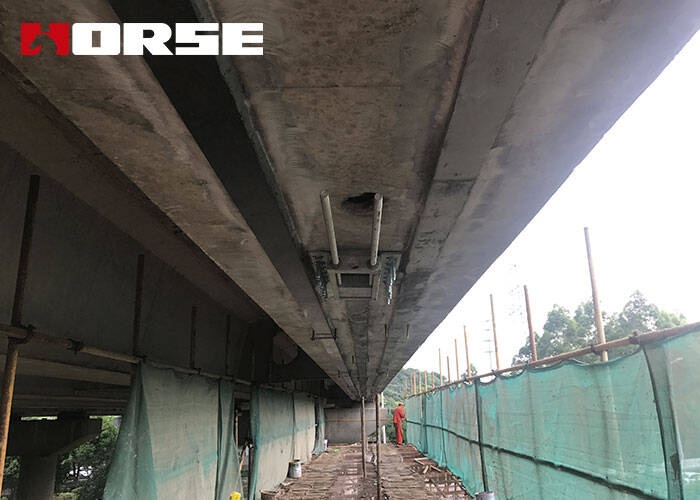Bridge T Beam
Prestressed Carbon Fiber Plate
Prestressed Carbon Fiber Plate To Strengthen The Bridge T Beam


The prestress active reinforcement method refers to the application of prestress to the post-reinforcement material arranged in the tension zone (or weakening resistance zone) of the reinforcement member to improve the bearing capacity and crack resistance of the original beam. For the reinforcement of large-span bridges, the prestressed carbon fiber board reinforcement technology has unique advantages.
A lot of theoretical analysis and practice have proved that the use of prestressed carbon fiber board reinforcement technology can greatly increase the flexural bearing capacity of the original beam. Due to the flexible construction arrangement of the prestressed carbon fiber board reinforcement technology, the shear bearing capacity of its oblique section is also significantly improved. In addition, the prestressed carbon fiber board has the following advantages:
1. Due to the effect of prestressing, the carbon fiber board will exert an upward force on the reinforcement members, which will make the bridge arch. Solve the problem of excessive deflection under the bridge, and significantly improve the alignment of the bridge deck and the improvement of vehicle conditions;
2. The use of prestressed carbon fiber board reinforcement technology will partially close the cracks of the original beam, and will also limit the appearance and development of new cracks, and improve the durability of the structure. However, the use of prestressed carbon fiber board to strengthen the structure of the original beam concrete with poor compactness, large carbonization depth, and serious concrete damage and cracking has limited effect on improving the durability of the structure.
3. The external prestressed carbon fiber board reinforcement technology can be constructed without interrupting the traffic operation, which has a small impact on the operation of the bridge. At the same time, the external prestressed carbon fiber board reinforcement requires simple equipment and a short construction period.
Next, HORSE will use the case of prestressed carbon fiber board in Xishuangbanna to discuss with you the application of prestressed carbon fiber board reinforcement technology in actual engineering and the flexible solution to problems encountered in actual engineering.
Project background: The project is located in the tropical rain forest area of Xishuangbanna, Yunnan. The bridge design span is 30m, and the vehicle load rating standard is -20 for automobile and -100 for suspension. The upper structure uses fabricated reinforced concrete T-beams with a beam height of 1.8m. The side pier of the lower structure adopts cast-in-place concrete U-shaped abutment.
Disease situation: This bridge is an ordinary reinforced concrete T-beam bridge, and the original design load of the bridge is 20 to 100 for steam. Part of the bridge has now been damaged, and vertical cracks have appeared near the mid-span of the T-beam. After design analysis, it is believed that the pre-stressed tension does not meet the design requirements. Therefore, it is determined to use prestressed carbon fiber board for reinforcement.
Construction difficulties: The actual length of the bridge is 30m, but because it is stretched on the side and the stops on both sides block the stretched position, the actual stretched distance is only 27.5m, while the designed prestressed carbon fiber board is 26.4m. Therefore, the distance must be controlled during the installation of the anchor. Even if the shortest beam is installed with the fixed end to the end, the tension distance is less than 16.5cm. Only in the process of tensioning, the jack can be inverted to reach the tensioning distance.
The tensioning tooling of the prestressed carbon fiber board reinforcement system is composed of a fixed end anchor and a tension end anchor. When using this technology for reinforcement construction, sufficient tension distance should be reserved in accordance with the design requirements to meet the site construction requirements. Due to the narrow space reserved for the project site, the jack-to-top method was adopted during construction. When the prestress is tensioned, when the tension end bolt is about to reach the concrete structure, cut off the bolt to leave enough space, and continue to tension the prestress until the tension prestress reaches the design value.